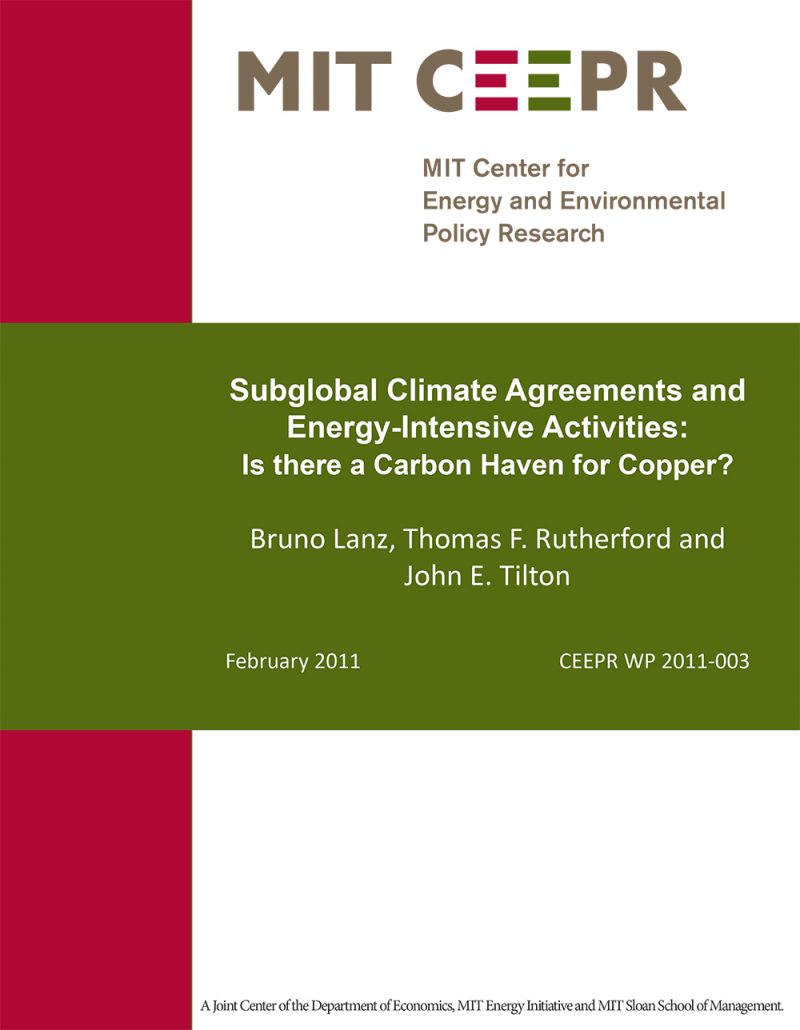Subglobal Climate Agreements and Energy-Intensive Activities: Is there a Carbon Haven for Copper?
Bruno Lanz, Thomas F. Rutherford and John E. Tilton
February 2011
Subglobal climate policies induce changes in international competitiveness and favor a relocation of carbon-emitting activities. We argue that many energy-intensive activities are also capital-intensive, so that carbon policies could affect rents rather than abatement or location. Taking copper as an example, we formulate a plant-level spatial equilibrium model of the industry, and we estimate a set of elasticities to calibrate the behavioral parameters of the model. Given 2007 market conditions, Monte Carlo simulations suggest that a $50/tCO2 tax in industrialized countries induces emissions reductions of less than one percent in the copper industry, with a mean emission leakage rate of 25%. Our results conform with empirical findings on the pollution haven effect but challenge projections from computable general equilibrium models.



